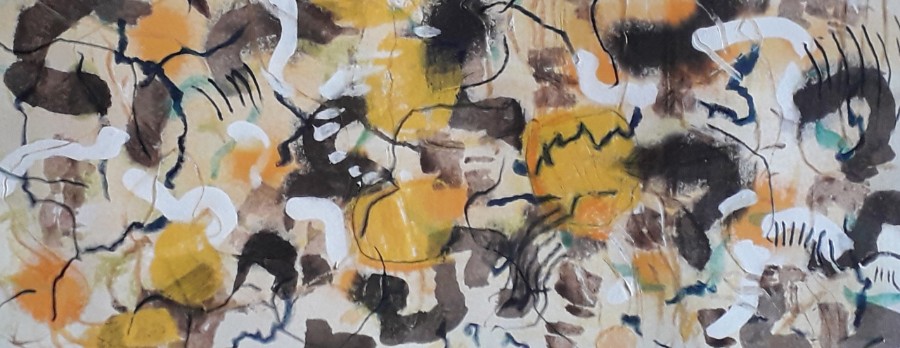
There is nothing so disagreeable, that a patient mind cannot find some solace for it.
Seneca the Younger*
There is nothing whatsoever
Shantideva**
That is not made easier through acquaintance.
So through becoming acquainted with small harms
I should learn to patiently accept greater harms.
Many people may not find patience the most attractive of subjects. Perhaps this is because before patience is called for, we experience impatience: our reaction to being confronted with things not working out to our liking, such as when the taxi to the airport is late, when our computer starts updating just before an important meeting, when a neighbor plays loud music that’s not to our taste, when someone takes a long time to get to the point in a conversation, or when we suffer prolonged physical pain. Impatience is our reaction to having to wait and/or being exposed to discomfort. It presents as a stressful experience, with elevated heart rate and blood pressure, muscle tension, sweaty palms, and a barrage of blameful thinking. We all know what it feels like—our momentum and sense of agency are suddenly blocked and we don’t know what to do with all that pent-up, forward-leaning energy.
We stand at the bus stop with our eyes narrowed into the distance, tight jaw and belly, willing the bus to appear with every fibre of our being. Or, behind the wheel of a car, we may find ourselves swearing, revving the engine, and honking the horn, oblivious to the human element in an obstruction. “Be more patient!” someone nearby may exhort, which might just be the final straw that tips the tension of frustration into rage. We hate not having a sense of agency, of not feeling in control and yet, somehow, by necessity or choice, we all have to learn and re-learn patience, acceptance, and forbearance throughout our lives. This seems to be the key to success in any endeavor, be it sports, the arts, business, relationships, or simply growing old gracefully. I am interested in investigating how I may be able to view patience less as an imposition and more as a positive choice.
“Through becoming acquainted with small harms, I should learn to patiently accept greater harms,” the great Indian Buddhist sage Shantideva taught in 700 CE. We have been exposed to a flood of images of refugees at Ukrainian train stations, desperate to escape the appalling bombardment of their home country. How would we fare in a situation as perilous and profoundly unsettling as this? Would we elbow our way to the last remaining seats on the train, or would we stay relatively calm and support our fellow sufferers? If you regularly practice mindfulness, chances are you would still feel the massive unsettlement of the nervous system, sensing the reptilian-brain-originated cocktail of fight, flight, or freeze hormones wash through your body. And, hopefully, you would be able to be “acquainted,” i.e. aware of them, recognizing the state you’re in, and drawing on your inner resources to regulate your nervous system. You would be able to come back into the “window of tolerance” between hyper and hypo states of arousal, to use the language of neuroscience. For example, you may focus on your outbreath, lengthen it slightly. Or soften your gaze into a wider angle, taking in the bigger picture. You may remind yourself that you are not in this on your own, thus activating the limbic system that finds comfort, or “solace”—in Seneca’s beautiful phrase—in connection.
It is also really helpful to realize that we are wired to react to danger in these knee-jerk ways, rather than giving ourselves a hard time for failing to stay equanimous under all circumstances! Over time, the deliberate practice of patience gives us confidence in our inner power to switch from a state of threat to one of more choiceful composure. “Neurons that fire together wire together” is a well-known statement from modern brain science, describing the pliability of our psyche—the ways we learn and change our personality traits. When I bring awareness to an unpleasant experience and my reactivity to it—aversion, fear, and impatience—and then manage to calm myself, living consciously though this whole process creates new pathways in the nervous system and I become more resilient.
A couple of days ago I found myself tipped back in the dentist’s chair to have a broken filling repaired. A relatively minor procedure, but still. . . . Hearing the approaching shrill whine of the drill tipped my system into alarm-mode. My hands, previously in repose on my belly, began to tense involuntarily, as if clasping a weapon. My right shoulder kept lifting off the back rest, preparing to ward off an enemy. “Breathe calmly” I encouraged myself, which led to some momentary release of the tension, but soon my body braced itself again. Being interested in this rhythm of tension and release and accepting the stress response helped to make the whole process a lot more tolerable.
I offered myself some empathic understanding: “Of course you would feel vulnerable, lying with legs higher than torso, the soft inside of the mouth exposed to the glaring light and to the sharp metal utensils of people in masks. Your mouth is locked wide open in a posture of a silent scream, but all you can do is swallow the saliva that seems to gather at an unprecedented rate. No wonder other parts of the body tense up.”
And I activated this little fantasy scene that I have come to play at every dental visit: I imagine that I am an artist who has a commission to photograph the hands of dental patients in their various stages of gripping, wringing, and clenching. Gnarled hands, perfectly manicured hands, small smooth-skinned hands, dark-skinned hands, bejeweled hands, I visualize gallery walls filled with varied, yet similar, expression of shared human distress. This compassionate widening of inner focus usually goes some way toward relaxation, as does reminding myself of the dentist’s and dental assistant’s motivation to help me. How wonderful this is—receiving the undivided attention of these highly skilled people, collaborating so smoothly and proficiently.
At another time, when I was steadying myself for my first tooth implant operation, I asked the dentist whether he had any soothing classical music to play during the procedure. His eyes lit up and he put on some classical tracks from his collection, which turned out to be heroic tenor arias by Puccini. It wasn’t exactly what I had had in mind, but I smiled with the recognition of how the ardent assertiveness of the music matched the dentist’s personality and how it also corresponded to the braveness of enduring the bone-crunching intensity of the operation. In this instance, I had decided to not only use my inner resources to keep myself in the green zone, but took action to change the outer conditions as well. Patience is not the only quality needed for skillful living; we also need more outwardly active ways of engaging.
In Mahayana Buddhism, patience (Skt: kṣānti) is one of the six paramitas or perfections. The others are generosity (dāna), ethics (śīla), vigor (vīrya), concentration (dhyāna), and wisdom (prajñā). Patience and energy are seen as a pair, playing off each other, informed by concentration and wisdom, and fueled by the desire to contribute to the good in the universe—generosity and ethics. Patience is a value in its own right and at the same time, like an opal, contains shimmering filaments of the other qualities. This arrangement also makes sense when we look at what creates a robust nervous system. The “doing mode” of the sympathetic nervous system needs to be in balance with the “being mode” of the parasympathetic system; both stillness and movement are necessary and they are in touch with and directed by the wisdom and compassion of the higher brain functions through the regulation of the vagus nerve. Patience is not grimly bearing our lot under all circumstances, becoming more and more stuck and frozen. Yes, in mindfulness training we turn toward the unwanted experience rather than fighting it, and we make sure it doesn’t unhelpfully dominate our states of mind to the point of re-traumatization.
Our struggle with patience is not only to do with our innate desire to avoid unpleasantness; we dread the experience of inner and outer powerlessness, which can lead to numbness and depression. The Earth’s population as a whole is in such a state of horrified immobilization with regard to climate change. At a recent launch event for a document compiled by the Mindfulness Initiative, which is aiming to provide guidance to policymakers on the role that mindfulness can play in the climate crisis, guest speaker Jon Kabat-Zinn impressed me with some pertinent and inspired statements: “We have a responsibility to operationalize our interconnectedness. It is an all-hands-on-deck moment on spaceship Earth. We all have to find the way to act that resonates with us. Mindfulness is not passivity, not a vacuous spaciousness. When Doing comes out of Being, it is infectious in transmitting a sense of possibility. Mindfulness doesn’t mean we don’t act when it’s time to act.”***
During a recent seminar with the Nonviolent Communication trainer Kirsten Kristensen, I learned about a training organization called Peace Engineers. Some members who are trained in calming the nervous system have placed themselves into groupings of potentially frightened people in the Ukrainian war, in bomb shelters, simply to radiate their calm presence. I find this story deeply motivating to continue meditating and healing personal and collective trauma—my parents having lived through the Second World War in Germany—knowing this will not just be for my own good.
I want to be fully committed to both the practice of patiently letting things be what they are—enjoying that kind of inner mastery and peace—and to the discernment and courage to take action in ways that avoids panic and burn-out. What is helpful in this respect is viewing patience as a desirable state, as a beautiful and fluid way of being present, not just a grim-faced necessity. An often-used metaphor is that of a majestic mountain, patiently enduring the onslaught of the elements and gradually being worn smooth. Another image that speaks to me is more dynamic: firmly rooted seaweed, intertwining and dancing with the forces of the sea. When I was making some artwork on the theme of patience, what came to me was the color yellow, rich and mellifluous. When I am meditating and gripped by impatience, feeling the urge to get up and do something before the allotted time or wanting to escape some vague sense of emotional unease, I conjure up patience as an attractive, gentle, flowing way of being, one that builds confidence, opens the heart, and lets me surrender more easily into the ever-present flow of interconnected presence. I trust emergence—trust that, out of such dynamic forbearance, something good and unforeseen will flower and that it will be a valuable contribution to a more peaceful world.
* From De Tranquillitate Animi, X.
** From A Guide to the Bodhisattva’s Way of Life by Shantideva. Translated by Stephen Batchelor, 1979. Dharamsala: Library of Tibetan Works and Archives.
*** From my notes taken during the event.
Related features from BDG
Engaging the Six Paramitas to Care for Animals, Part One: Generosity, Discipline, and Patience
My Buddhist Teacher Wendell Berry
Insight Develops Mind Power
The Price of Freedom
When Time is Undervalued












